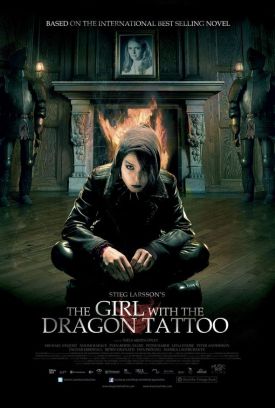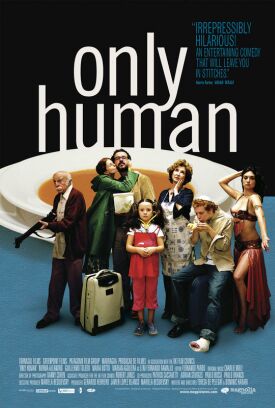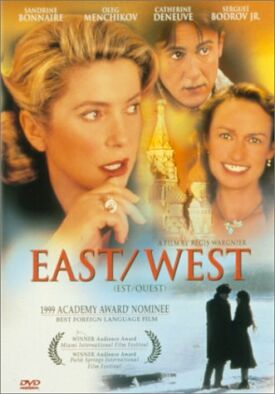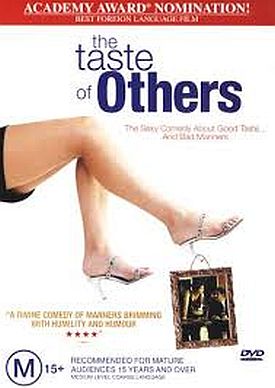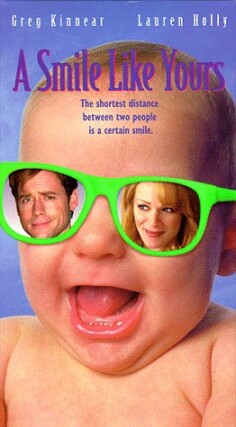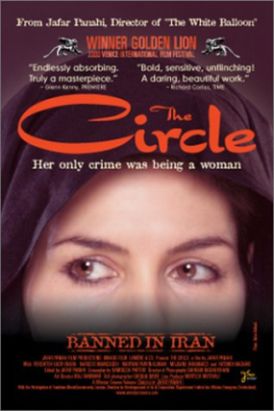Girl With the Dragon Tattoo, The
The Swedish title of The Girl With the Dragon Tattoo, Män som hatar kvinnor, means “Men Who Hate Women” and is much more accurately descriptive of the content both of the novel, by the late Stieg Larsson, and of the film, to which the eponymous dragon tattoo is adventitious at best. Indeed, the tattoo isn’t even mentioned in the film but is merely shown to us in lieu of her more salacious bits when Lisbeth Salander (Noomi Rapace) strips off for some aggressive sex with the hero, Mikael Blomqvist (Michael Nyqvist). The novel of nearly 600 pages is divided into four parts comprising 29 chapters, plus prologue and epilogue, and each part begins with an epigraph stating some little-known fact about sex-related crimes in Sweden — as, for example, that “Thirteen percent of the women in Sweden have been subjected to aggravated sexual assault outside of a sexual relationship.”
These facts may be true, for all I know, and not invented like the rest of the story, but they are there to reinforce the impression created by the novel that what most people think of as the pacific and well-behaved social democracy of Sweden is actually a hotbed of perversion, violence and criminality. The movie, made by and for Swedes and in Swedish with English subtitles, works hard to create a similar impression. Interestingly, Hollywood loves to believe the same thing about America, even though the vogue for serial killers has waned a bit since its heyday in the 1990s when the success of The Silence of the Lambs produced a positive flood of them. Anyway, you’d think that a Swedish serial killer who is also a member of a wealthy and powerful family controlling a multinational corporation, a religious nut and a Nazi to boot, would be right up our alley.
In a way it is, too, but the change of title is one indication that Mr Larsson, together with Niels Arden Oplev, who directed the movie, and Nikolaj Arcel and Rasmus Heisterberg, who wrote the screenplay, were a little too political for American tastes. Not that we would have anything against that trifecta of evil, a religious Nazi serial killer who is also a corporate chieftain. Hollywood’s best and brightest probably wish they had thought of it themselves. I’m not sure they didn’t. But somehow the idea of “men who hate women” is a turnoff to us. It will be interesting to see whether this voyeur’s field day, replete with images of murdered and tortured women, to which that title was formerly attached as its wholly inadequate excuse for being is also at least a little bit un-American.
For Tattoo was last year’s box office champion in Europe, but after three weeks on only 87 screens in America its domestic gross to date is only just over a million and a half dollars. That gives a pretty good per-screen average, but it is not exactly an example of box office muscle, even for a foreign language film. There’s not much to give us hope about American popular culture, but if this movie is the flop it so richly deserves to be, that’s something to hold on to. At least Alvin and the Chipmunks: The Squeakquel — gross to date $219,407,028 — is a symptom only of inanity and not of a disgusting and culture-wide moral and spiritual sickness. I don’t know about you, but I’m rooting for American exceptionalism in this, as in other ways.
The story is quite long and complicated, even though the movie considerably simplifies Larsson’s novel in order to squeeze everything into two and a half hours. The masochistic Swedes had to sit through a three hour version. The hero, Blomqvist, is a journalist who is on the trail of a crooked industrialist — not the serial killing Nazi religious nut but another one — when he is set up with a phony story and subsequently convicted of libeling his victim. He is sentenced to pay a stiff fine and to serve a three-month jail sentence as a result of which he also has to leave the little left-wing magazine, Millennium, which employs him as editor.
His life apparently in ruins in the interval between his conviction and his having to report to serve his prison sentence, he gets a call from yet another industrialist named Henrik Vanger (Sven-Bertil Taube) who wants to hire him to investigate the disappearance of his great-niece, Harriet, 36 years before. The interesting detail is that, for reasons too complicated to go into here, we start from the knowledge that it had to be a family member who was responsible for her disappearance. The would-be detective’s problem is that pretty much all the male members of the family apart from Henrik, the only one of five brothers free of the Nazi taint, are so horrible that any one of them — or any combination of them — could easily be imagined to have killed the girl.
So Blomqvist is back doing what he (and the late Mr Larsson himself, as it happens) loves most, which is investigating wrongdoing among the wealthy and powerful. Henrik is a decent enough sort, but he is now 82 and retired, and he leaves the running of Vanger industries to his great nephew Martin (Peter Haber), Harriet’s brother. Blomqvist teams up with Lisbeth, the dragon lady, as his researcher. She is a high-strung youth of 24 who appears to have been the victim of multiple acts of sexual violence, one of which we witness if we’re not hiding our eyes behind our fingers. But she is also a crackerjack researcher and computer hacker with a photographic memory. Not surprisingly, she and Blomqvist soon discover that Harriet’s disappearance was connected with a string of religiously-themed sexual murders dating back to 1947 and continuing, perhaps, up to the present day (which is supposed to be 2002).
Here be no “spoilers,” of course, but you can pretty much guess the rest, apart from the solution to the Harriet mystery. That, together with the careful build-up of forensic detail, is what keeps you turning the pages of the novel, which is not quite so bad as the movie. In the latter, Harriet’s fate is of much less interest than the hunt for the Nazi serial-killer and his horrifically butchered victims. All that was weakest in the novel is thus exaggerated into awfulness as the anti-corporate and anti-religious elements are highlighted to the point of luridness, the visual medium is exploited to show us things that should not be seen as part of a popular — or unpopular, for that matter — entertainment, and the whole thing ends with a straightforward prison fantasy in which a girl-victim robs a robber and (presumably) escapes to live a life of luxury on a beach somewhere.
I had lost interest in the book once the mystery of Harriet Vanger’s disappearance was solved and hadn’t finished it, so I went home from the movie and read the ending. In the novel, there is a similar robbing of the same robber but more interest in the cleverness of the scam by which this is accomplished. The movie leaves out all that detail and, like other black-box movies (as I call them), it simply expects us to assume that computer hackers can do anything. Also, the robbery was not the point of Larsson’s ending in the novel but rather a romance which fizzles, at least partly because the damage done to a victim of sexual violence is seen as irreparable.
That the same victim gets away with a fortune is perhaps meant to be seen as some kind of compensation for what she has endured at the hands of men — though not the man whose fortune she has expropriated. Nor is it her only act of revenge upon mankind. Such fantasies, perhaps, offer a little something for the ladies to make up, in some measure, for the revolting images of torture and murder that presumably appeal to some kinds of men. Not, I’d like to think, to most men. At least not in America.
Discover more from James Bowman
Subscribe to get the latest posts to your email.

